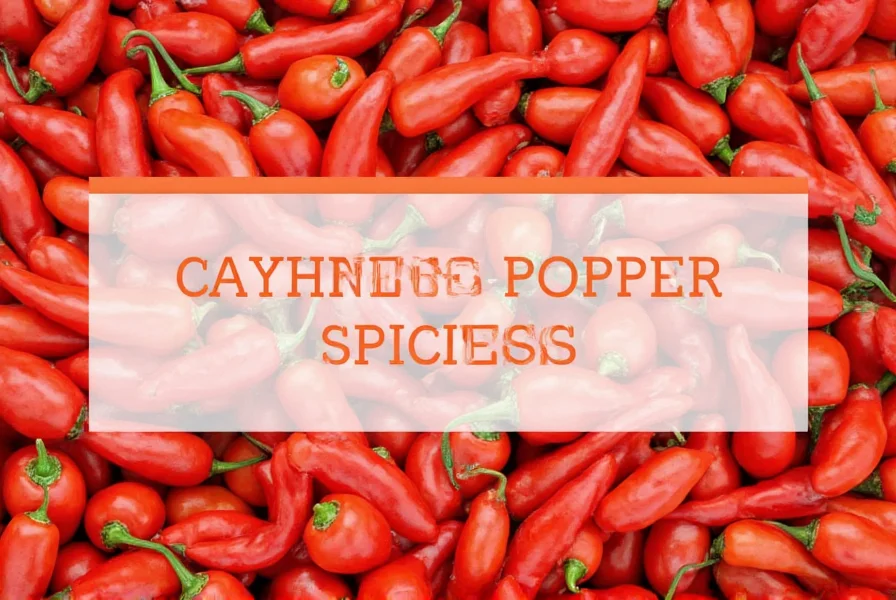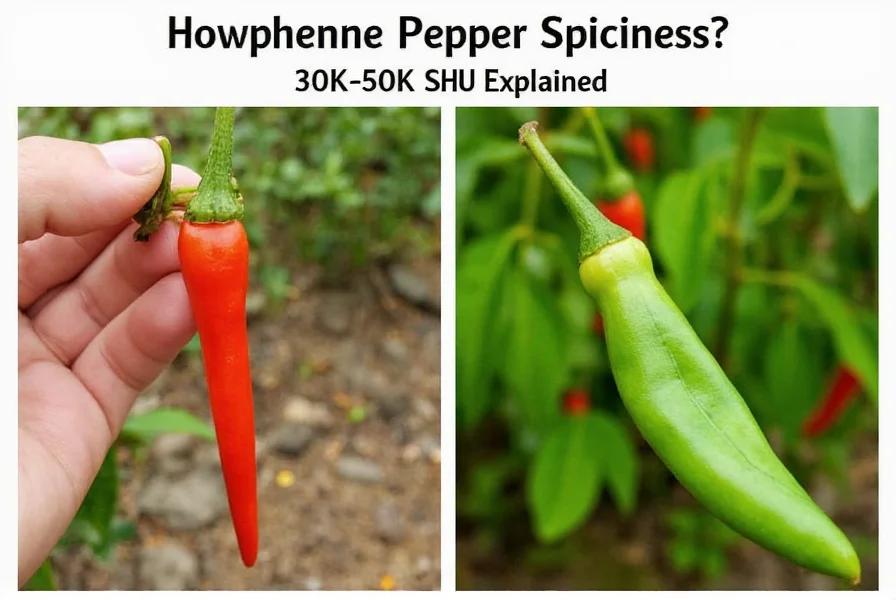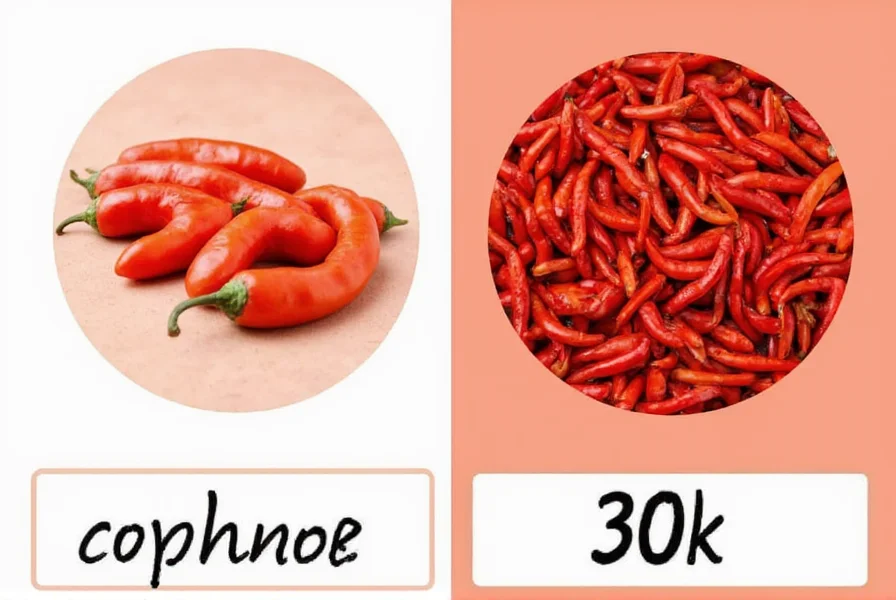Cayenne pepper's distinctive heat profile makes it a staple in kitchens worldwide, but understanding its precise spiciness helps cooks use it effectively. Unlike milder peppers that add flavor with minimal heat, cayenne delivers a pronounced burn that builds gradually and lingers. This characteristic heat comes from capsaicinoids, particularly capsaicin, which trigger pain receptors in the mouth and throat.
Understanding the Scoville Scale for Cayenne Pepper
The Scoville scale, developed by pharmacist Wilbur Scoville in 1912, measures chili pepper heat by determining capsaicin concentration. Originally a subjective taste test, modern measurements use high-performance liquid chromatography for precise capsaicin quantification. Cayenne's 30,000-50,000 SHU range means it's approximately 12-20 times hotter than a typical jalapeño (2,500-8,000 SHU) but only about one-fifth as hot as a habanero (100,000-350,000 SHU).

Cayenne Pepper Heat Variability Factors
Several factors influence cayenne pepper spiciness:
- Growing conditions: Soil quality, climate, and water stress can increase capsaicin production
- Ripeness: Fully mature red cayennes tend to be hotter than younger green varieties
- Plant variety: Different cultivars produce varying heat levels
- Preparation method: Dried cayenne powder often concentrates heat compared to fresh peppers
Interestingly, the heat isn't evenly distributed throughout the pepper. The placenta (white ribs) contains the highest capsaicin concentration, while the flesh carries less heat. This explains why removing seeds and membranes reduces spiciness significantly.
Comparative Heat Levels of Common Peppers
| Pepper Type | Scoville Heat Units | Heat Relative to Cayenne |
|---|---|---|
| Bell Pepper | 0 SHU | Not spicy |
| Jalapeño | 2,500-8,000 SHU | 1/6 to 1/4 as hot |
| Cayenne | 30,000-50,000 SHU | Baseline |
| Thai Bird's Eye | 50,000-100,000 SHU | 1-2 times hotter |
| Habanero | 100,000-350,000 SHU | 2-7 times hotter |
The Science Behind Cayenne's Burn
Capsaicin, the primary compound responsible for cayenne pepper spiciness, binds to TRPV1 receptors in the mouth and skin. These receptors normally detect heat, so when capsaicin activates them, your brain interprets the sensation as actual heat. This explains why drinking water provides little relief from pepper burn—capsaicin is oil-soluble, not water-soluble. Dairy products like milk or yogurt work better because casein proteins help break down the capsaicin molecules.
Cayenne typically contains 0.1-1.0% capsaicin by weight, with most commercial varieties averaging around 0.3%. This concentration directly correlates with its position on the Scoville scale. The body's reaction to capsaicin includes increased heart rate, sweating, and endorphin release, which explains why some people enjoy the "burn" sensation.
Practical Cooking Applications
Understanding cayenne pepper heat levels helps in recipe development. When substituting cayenne for other spices:
- 1/4 teaspoon cayenne ≈ 1 fresh jalapeño (seeds removed)
- 1/8 teaspoon cayenne ≈ 1/2 teaspoon red pepper flakes
- 1/2 teaspoon cayenne ≈ 1 fresh serrano pepper
Chefs often add cayenne early in cooking to distribute heat evenly, though some prefer adding it later to preserve more volatile flavor compounds. The heat remains stable during cooking, unlike some other flavor components that diminish with heat exposure.

Safety Considerations When Handling Cayenne
Due to its high capsaicin content, cayenne requires careful handling:
- Wear gloves when processing large quantities
- Avoid touching eyes or face after handling
- Wash hands thoroughly with soap and water
- Use ventilation when working with dried cayenne powder
For accidental skin exposure, rubbing alcohol or oil can help remove capsaicin before washing with soap. Milk-soaked cloths provide relief for skin burns, while dairy products help alleviate mouth burn.
Frequently Asked Questions
How does cayenne pepper compare to red pepper flakes in heat?
Cayenne pepper typically measures 30,000-50,000 Scoville units, while red pepper flakes (usually made from cayenne and other peppers) range from 15,000-25,000 SHU. Pure cayenne powder is generally 1.5-2 times hotter than standard red pepper flakes, though this varies by brand and specific pepper blend.
Why does cayenne pepper feel hotter when dried?
Drying concentrates capsaicin by removing water content. Fresh cayenne peppers contain about 90% water, so when dried and ground into powder, the same amount of capsaicin occupies less volume. This concentration effect makes 1 teaspoon of cayenne powder significantly hotter than an equivalent volume of fresh pepper.
Can cayenne pepper heat level vary between brands?
Yes, significant variation exists between cayenne products. Factors include pepper variety, growing conditions, processing methods, and whether other peppers are blended in. Commercial cayenne powder can range from 20,000 to 80,000 SHU. For consistent results in recipes, purchase from reputable spice companies that standardize their heat levels.
Does cayenne pepper get hotter when cooked?
Cayenne's capsaicin remains stable during cooking, but the perceived heat can increase as other flavors mellow. The heat doesn't intensify chemically, but prolonged cooking can distribute capsaicin more evenly throughout a dish. Adding cayenne late in cooking preserves more volatile flavor compounds while still delivering consistent heat.
How much cayenne pepper is too much for most people?
For average palates, 1/8 to 1/4 teaspoon of cayenne powder per serving provides noticeable heat without overwhelming most diners. Exceeding 1/2 teaspoon per serving typically creates intense heat that many find uncomfortable. Individual tolerance varies significantly based on cultural background and regular exposure to spicy foods.











 浙公网安备
33010002000092号
浙公网安备
33010002000092号 浙B2-20120091-4
浙B2-20120091-4